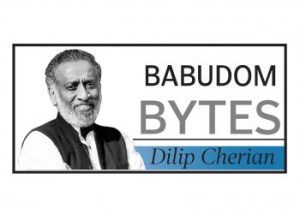Clock’s Ticking

Seven years ago, the NSE International Exchange (NSE IX) was launched with much fanfare at GIFT City—India’s glittering bet on becoming the next Singapore or London in global finance. Fast forward to today, and it’s safe to say the hype hasn’t quite matched the hustle. Despite a carefully crafted framework and political will, NSE IX has slowly taken off. Enter Neeraj Kumar Gupta.
The former Union Finance Secretary and disinvestment czar has now become Chairman and Public Interest Director of NSE IX. With his decades of bureaucratic battle-hardened experience, from handling PSUs and equity ETFs to shepherding big-ticket policy reforms, Gupta’s appointment is considered a make-or-break moment for NSE IX.
What’s holding the exchange back? For starters, Indian companies still look outward—Singapore, London, New York—when it comes to raising capital. Global investors don’t see enough reason to shift their gaze inward. And GIFT City’s “unified regulator,” IFSCA, hasn’t yet lived up to the promise of being a true one-stop shop. It still leans heavily on the older regulatory machinery of SEBI and RBI, and frankly, that’s not going to cut it.
If NSE IX is to become the financial magnet it was meant to be, it must offer transactional ease that beats Singapore, not just mimics it. That means faster approvals, lighter compliance, and a smarter, investor-first playbook. Gupta knows how to break silos and get regulators to speak the same language—now’s the time to prove he can do just that. The clock is ticking.
CPC’s snail pace
It has been almost four months since the government initially approved the establishment of the 8th Central Pay Commission (CPC), and there have been no updates since then. Now, whispers are emerging that the gears are finally turning. But even those seem more like the creaking of bureaucracy than the hum of decisive action.
The government is inching toward finalising the terms of reference and picking the chairperson and members. That’s right—we’re still talking about forming the team. Not drafting a report. Not consultations. Just assembling the crew.
The usual 10-year ritual of reviewing salaries and pensions of Central government employees is supposed to factor in cost of living, economic conditions, and inflation. Fair enough. But when you consider that this affects nearly 50 lakh Central employees and 60 lakh pensioners, you’d think urgency would be baked into the process.
Instead, we get the classic slow burn. An internal circular last week invited applications to fill 35 posts on a deputation basis—so yes, the office is still under construction.
If all goes well (and that’s a big if), the 8th CPC will submit its report by mid-2026. Retroactive salary and pension adjustments may follow in 2027–28. That’s a full decade since the last revision in 2016. And with inflation nibbling away at paychecks, that’s a long time to ask people to wait. Do remember that people don’t spend “in principle”. They pay in reality. Time to pick up the pace.
Loud signal
Few blink when the government shuffles its babus. It’s like musical chairs—routine, rhythmic, and mostly unremarkable. But now and then, a tune changes. And this time, it did.
The latest round of administrative reshuffles has given us more than just a list of who’s where. It’s given us a clear frontrunner: the IAS batch of 1994. In an unusually bold sweep, nine officers from this cohort have been elevated from Additional Secretary to Secretary, and two more named Special Secretaries. That’s eleven heavy-hitters from the same batch, now occupying the highest bureaucratic perches in India.
It matters because this isn’t just paperwork. It’s a power play. Many of these officers have previously served in high-trust zones like the Prime Minister’s Office and the Cabinet Secretariat—roles that tend to groom officers not just in governance but also in the government’s thinking. Arvind Srivastava, now Revenue Secretary, was with the PMO until recently. Anuradha Thakur, the incoming Economic Affairs Secretary, has spent time in the Cabinet Secretariat. Their current postings put them at the heart of India’s financial and economic policy engine.
The rise of this batch signals more than seniority or coincidence. It suggests consolidation, perhaps even calibration, of administrative leadership around a cohort closely aligned with the Centre’s priorities.
It’s not unprecedented for a batch to rise together. But the scale and the strategic positioning make this one worth watching. The batch of ’94 isn’t just stepping up—they’re stepping in, shaping what comes next.
By Dilip Cherian
News